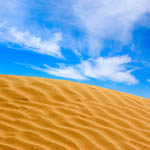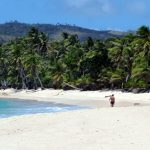4 Distinctively Different National Parks of Canada
Image Courtesy of Pixabay
A mixed land of unrivalled natural beauty across 48 national parks and 21st-century innovation in cities such as Toronto that alone attracts 4 million visitors per year, Canada is considered one of the best places in the world to visit. The environmental extremes, mixed cultures and rich animal life has given rise to rich traditions, world-class cuisine and a societal friendliness that is known all over the world.
Note: Travelling to Canada might require that you apply for an eTA (you can see more about that here) depending on certain factors, so please check first before planning a trip.
The 9.98 million square miles of land makes Canada the second-largest country by landmass, and because of this the land offers a unique variety of scenery, wildlife and culture depending on where you visit from south to north, east to west and everywhere in between. In addition, Canada is one of the few places on Earth where you can visibly see the Northern Lights.
Classic American animals such as moose, beaver and wolves are abundant within the vast and untamed wildernesses of the country yet concerningly endangered, rare and exotic creatures such as Polar bears, Vancouver Island Marmots and the Atlantic Walrus can all be found in specific territories and national parks of the nation.
The mixed qualities of the sights, people and natural life are among some (but not all) of the greatest reasons to visit this amazing country. However, planning a trip to see specific things can be tedious, so visiting Canada’s national parks is one the best ways to see what the country has to offer. There are many national parks in Canada, so perhaps four wildly different parks could be visited in order to encompass all aspects of the land.
North: Quttinirpaaq National Park
Located in the Qikiqtaaluk Region of Nunavut, Quittinirpaaq is the most northerly park available to visit inside Canadian borders and is located just 800km from the North Pole. As such, this one of the best locations in Canada for viewing the Aurora Borealis, one of nature’s greatest cosmic spectacles that were once thought to be spirits dancing into the afterlife by native American tribes.
Given its location, it isn’t possible to simply drive to Nunavut but you can get a direct flight from multiple locations including Montreal, Ottawa and Yellowknife. You should prepare for a cold expedition when traveling here as temperatures are often subzero and extreme weather is constant which is why only 18 people per year visit the park. However, once there you can expect stunning glaciers, Polar bears and Peary caribou.
South: Pelee National Park
Being the most southern area of Canada, Point Pelee national park sits on the furthest tip of the country that penetrates into the United States by way of Lake Eerie. Because of this, the park is surrounded by multiple US states: New York, Pennsylvania, Michigan and Ohio, making it the most accessible Canadian National Park from an American traveller’s point of view.
If you are a beginner at visiting National Parks then you will find Pelee to be one of the easiest, since it has a more familiar feel in stark contrast to Quittinirpaaq. The land is mostly dense marsh, however, beaches have formed on the surrounding edges of the point, both being home to many species of birds such as warblers and a booming deer population due to the lack of natural predators in the area.
East: Terra Nova National Park
A glorious territory of outstanding boreal beauty, Terra Nova sits on the Atlantic ocean nestled between Bonavista Bay and Sandy Cove. Because of its boreal nature, the area is like a cross between something from a Christmas postcard and a scene from a Jack London novel with 154 miles of coastal scenery and numerous trails for hikers of all skill levels.
Fortunately, this park is also accessible by road so driving is an option but unless you are very experienced it is best advised to visit in the summer months as the area is prone to extremely adverse weather. Once there though, you will be treated to some of nature’s greatest spectacles such as river rapids, dolphins and orcas, and a multitude of forest animals like foxes, mink and eagles.
West: Banff National Park
Also very close to the United States, Banff National Park is located north of Montana and Idaho where the US meets the Canadian border in Alberta. What’s special about Banff is that it was actually Canada’s first designated National Park and was modelled to resemble the US’s famed Yellowstone National Park, and because it’s situated near major cities such as Calgary and Edmonton is one of the most popular with over 4 million visitors per year.
For this reason, you could consider visiting Banff first since it is the most user-friendly national park of all the ones mentioned. Lake Louise, Moraine and Peyto Lake are among some of the best family areas inside the park with many fun activities and lodgings for a special holiday. Family favourite animals like Bighorn sheep, squirrels and marmots reside in the park area however there are around 65 Grizzly bears that also call the park home.
Most countries have their own national parks such as Yellowstone in the United States, the Lake District in the UK and Kakadu in Australia. However, the extremities of Canada means that the country plays host to some of the most amazing national parks, complete with vastly different natural formations and wildlife.
The northern extremes of Quttinirpaaq mean that only the most experienced travellers are able to brace the environment, but some of the rarest animals and views on Earth can be experienced. Pelee National Park to the south penetrates deep into the Northern United States and as such is very accessible and familiar.
One of the most magical places on the planet, Terra Nova is blessed by the bounty of the Atlantic ocean with coastal scenery to die for as well as fairytale-like inland forests and woodland creatures. Banff is Canada’s oldest national park and as such is one of the most visited, especially given its close proximity to the US and major Canadian cities. Because of this, the park is more family-friendly than most and attracts over 4 million visitors annually.











